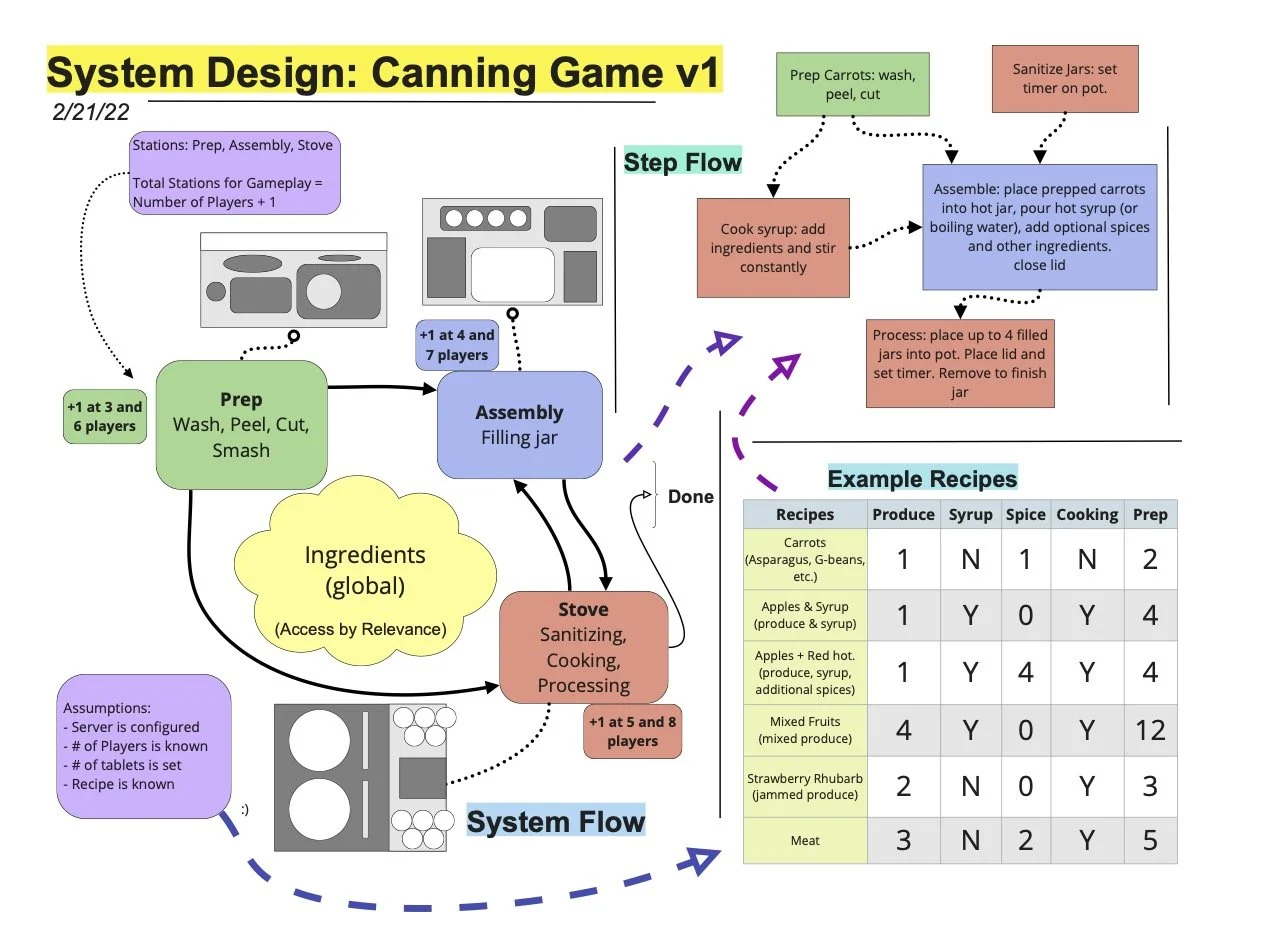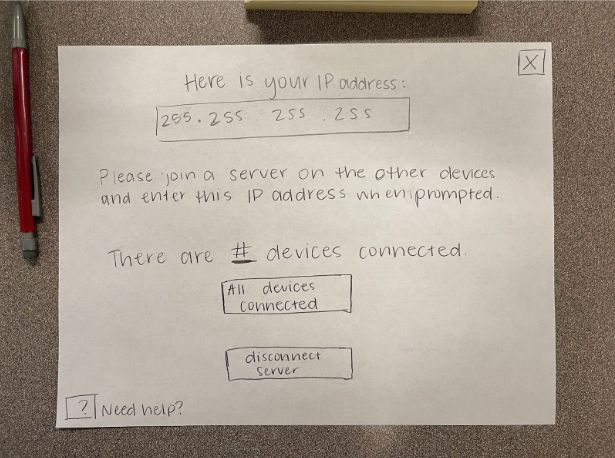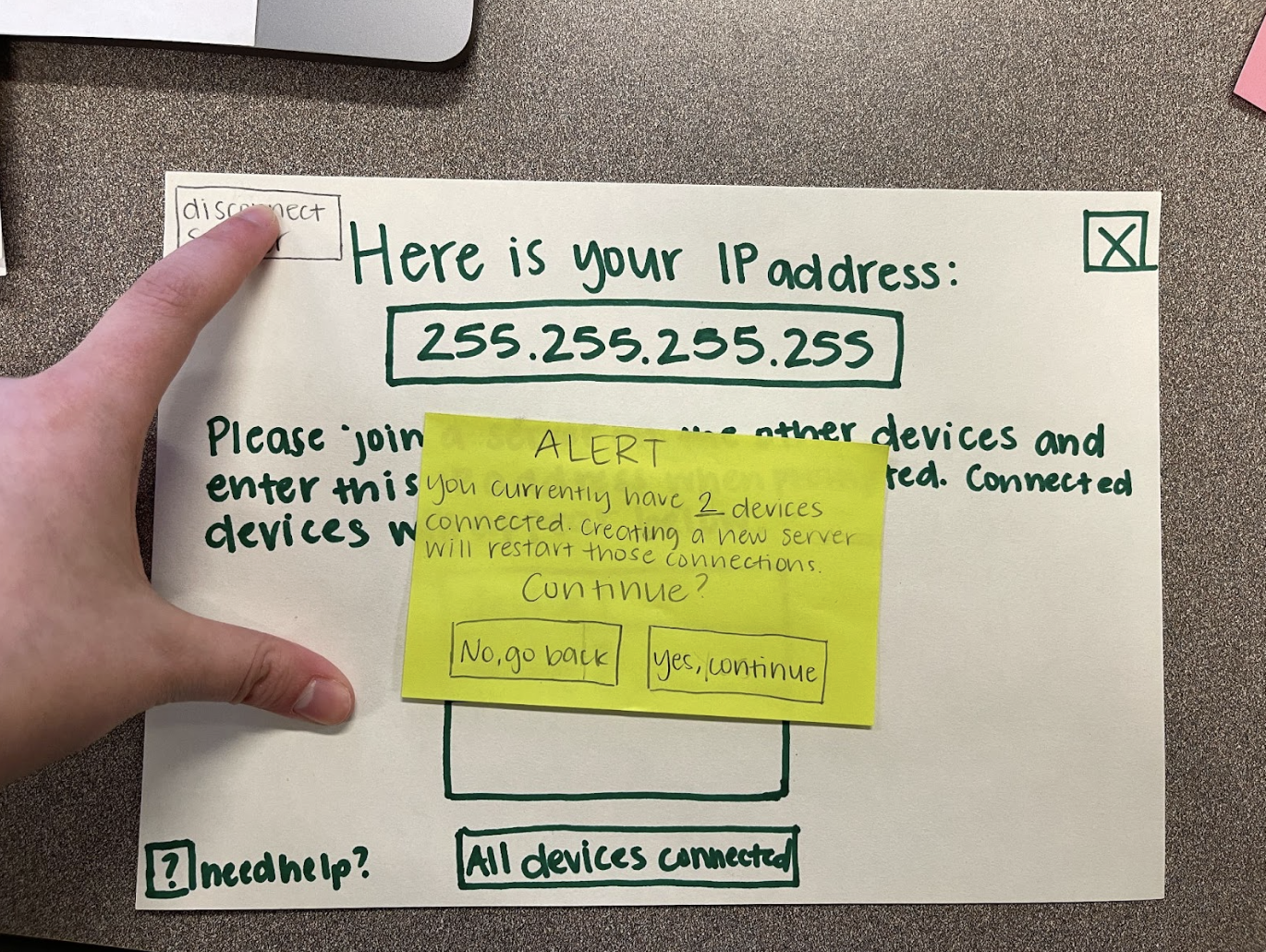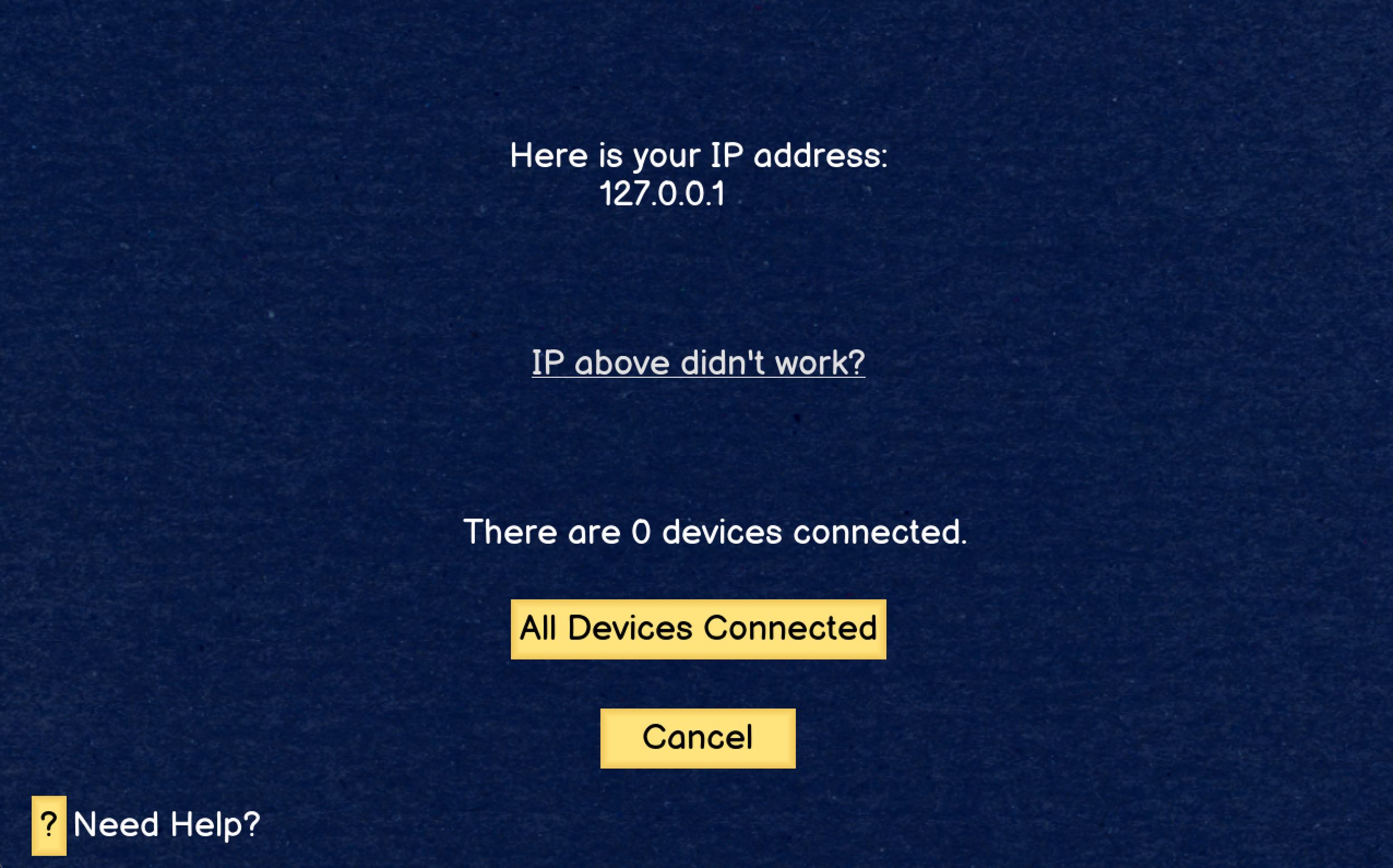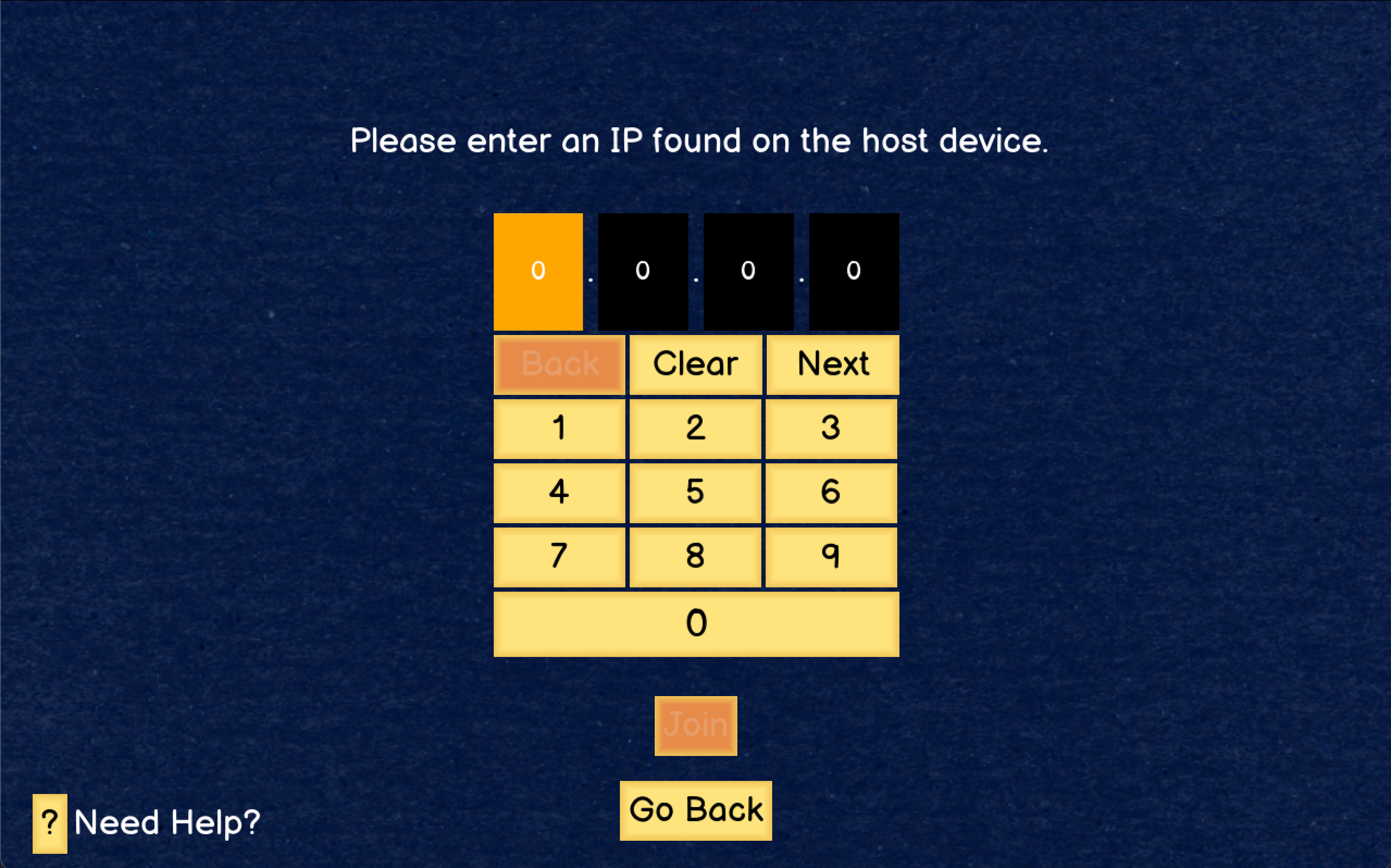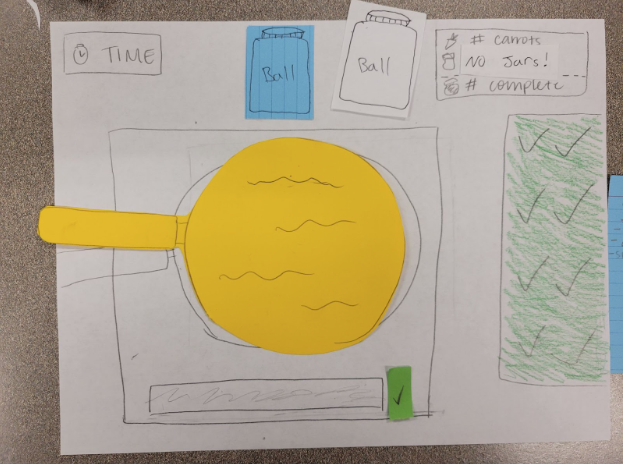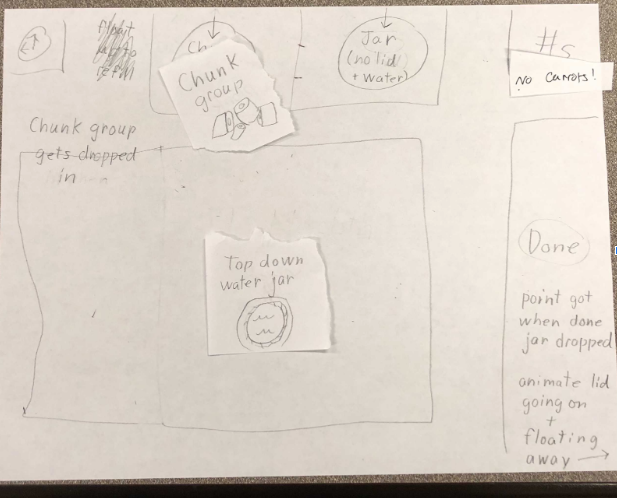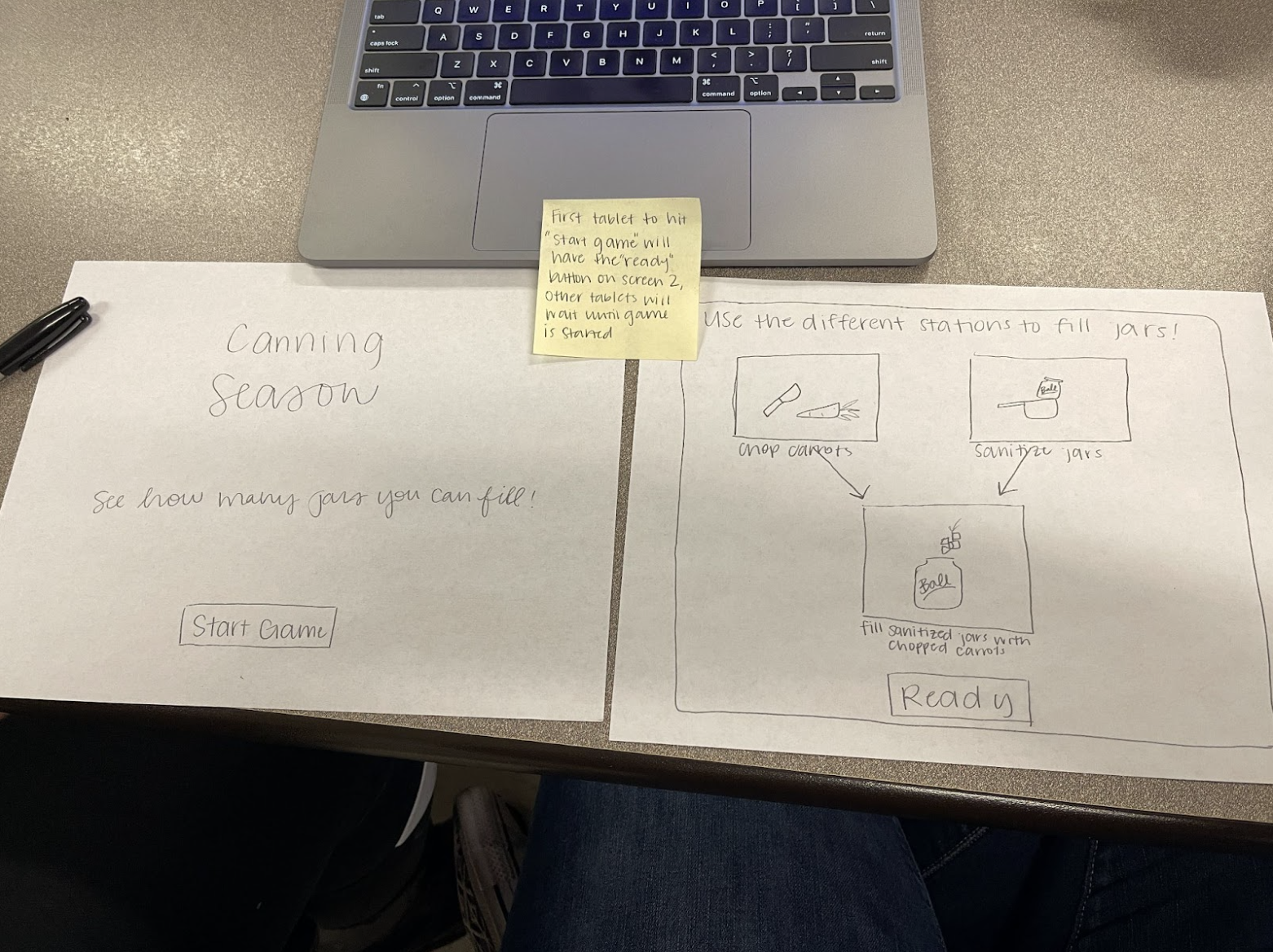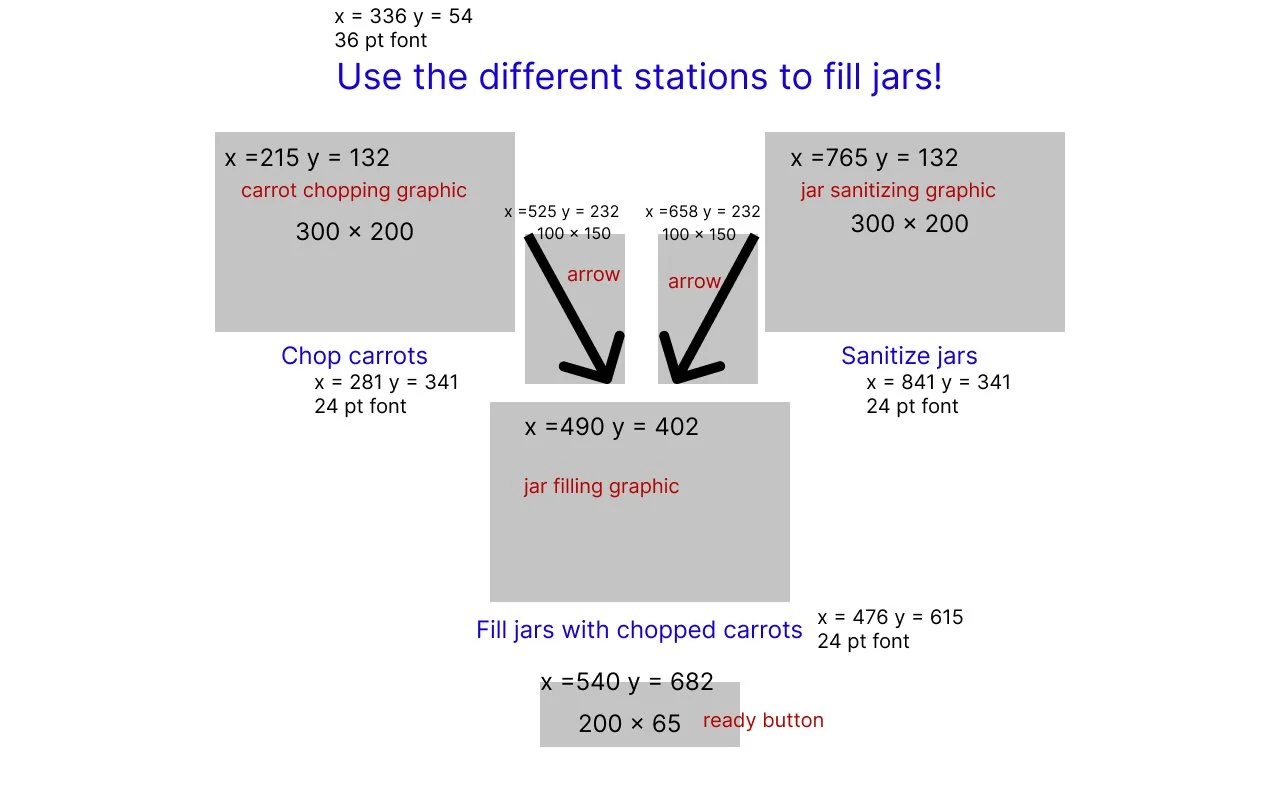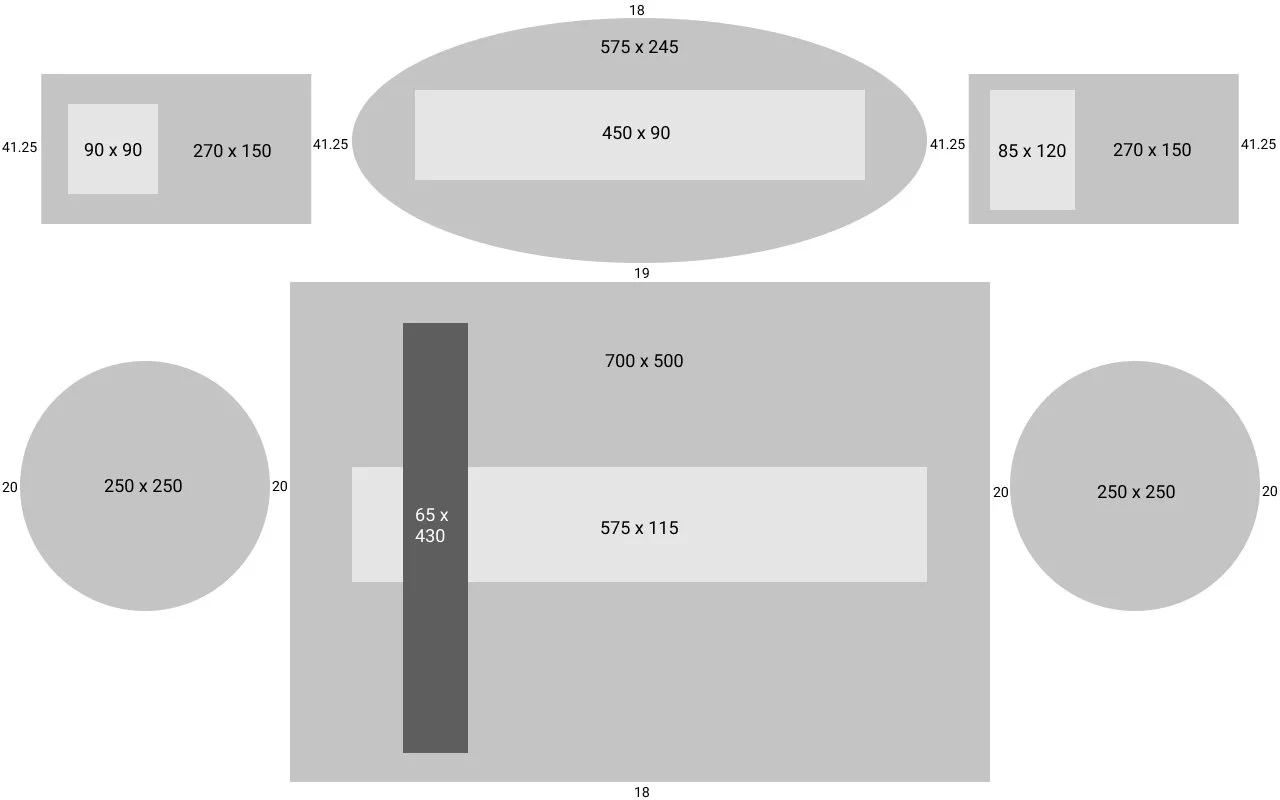Canning Season
Creating a museum interaction to build community interest in food preservation
Project Overview
Canning Season is a cooperative game that uses multiple network-connected tablets to allow users to learn about the different steps of food preservation and canning. A multidisciplinary team of 13 undergraduate students, with the guidance of a faculty advisor, created Canning Season as part of an immersive learning class at Ball State University. Minnetrista tasked the team with creating an interactive experience to install in the museum, which focuses on the Ball family legacy in Muncie, IN. The game consists of three different steps of the food preservation process and requires players to work together to can as many items as possible in a certain amount of time.
ROLE
UX Designer/Reseacher
CLIENT
DURATION
4 months
DELIVERABLES
UX Design, Game Design, Interaction Design, User Testing
Defining the structure of the game
Our team began by deciding on the game's overall structure, gameplay, and content. We spent the first few weeks brainstorming and creating paper prototypes of various ideas. We ultimately decided on a multi-tablet game inspired by Cooking Mama and Overcooked to teach people about the collaborative process of food canning.
Using Stone Librande’s one-page game design document philosophy, we created a document that laid out the necessary details of the game to begin design and development. We kept this design document on display in our game studio to remind us of game design decisions and allowed us to annotate and update the design as needed.
Designing the multi-tablet connection process
The structure of our game required multiple tablets connected by a server to communicate with each other. One of the biggest challenges we faced in creating a great player experience was figuring out the connection process of the tablets for museum employees.
We started this process by creating paper prototypes of the tablet connection experience that focused on instructions and error messages. We then created a digital prototype that we used to test with museum employees.
Our usability testing sessions provided the following insights:
Users of the host (starting) tablet would skip parts of the process and had no way of going back without restarting the connection process.
The terminology used was confusing for users without a technical background.
The default tablet keyboard was not accounted for in the design and blocked part of the entry field.
We then created new designs that addressed these issues and focused on simplifying the connection process.
Testing the tablet prototypes
Creating the canning stations
To create the final game design, we began by paper prototyping each main station to determine the layout, interactions, and assets. We conducted player testing with these prototypes to ensure understanding and usability before development began.
Testing with players
Through testing, the team found that players had an overall understanding of the process, but needed a little help in getting started. The team added a tutorial screen to show at the beginning to give players context and instructions. We also re-emphasized the HUD (heads-up display) to ensure players would notice and understand how the tablets affected each other.
Laying out the stations digitally
After feeling satisfied with the player testing results from the paper prototypes, the team began to create the stations digitally. I created wireframes of each station to give asset designers and developers key information on asset sizing and placement.
Canning Season is upon us
After multiple rounds of player testing and revisions, the team finished the game with a total of three, interconnected stations:
A chopping station to prepare vegetables for canning
A sanitization station to prepare jars for canning
A canning station that combines the prepared vegetables and jars
Each tablet affected the ability to progress on other tablets, making the game collaborative and fun for museum-goers and players. The game was delivered to Minnetrista, with the goal of implementation in the near future.
Bringing Canning Season to Meaningful Play
In October of 2022, Canning Season was featured at Meaningful Play Conference as a student-created game. I was able to attend this conference with our faculty advisor and one other student team member to present the game to conference attendees.
Other Projects
-

Ball State Unsung Heroes
Helping on-campus media outlets highlight a diverse range of Ball State students
-

SlashReviews
Creating a better Slack-integrated deliverable review process

